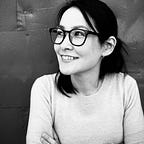Attending Mixed Method User Research Thinktank by UX STRAT
As a UX designer who is fairly new to the industry, I am eager to learn anything about user experience. Especially, when it comes to new innovative technologies, user research methods, accessibility, and inclusive design. I recently found out about UX STRAT, an organization that hosts conferences and workshops for designers, researchers, and product managers to discuss strategic approaches to product and service design.
Last week, I decided to check out their online event called “Mixed Method User Research,” which invited five exceptional user research industry experts to share their experience in applying mixed method user research in real-world projects. In addition to those in-depth presentations with case studies, it was followed by a panel discussion moderated by Paul Bryan, the organizer of UX STRAT.
Here are the recaps of each presentation and the panel discussion you may want to know.
Colette Kolenda, Research Lead @ Spotify
Colette talks about how her strategic research team helps leaders define Spotify’s company strategy. Taking leadership in both business and products, her one-stop-shop research team creates a wider, company-level impact by employing the mixed method multidisciplinary research as a comprehensive approach.
Kathryn Campbell @ Instagram
Kathryn uses a project at her time at Ticketmaster as a case study to illustrate mixed-method user research. She explains how triangulation user research helps to define, challenge or validate assumptions regarding problems around a product, as well as understanding user behaviors and attitudes for product implementation.
Tom Lorusso @ Xbox
Tom explains how mixed-method user research is powerful for holding accountability for both user experience and business goals. By using his recent project at Xbox as a case study, he unfolds the process of broad and narrow research methods to successfully drive Xbox mobile adoption.
Jos-marien Jansen @ Philips Experience Design
Jos-marien walks through her healthcare project at Philips and explains how she and her collaborative multidisciplinary teams conducted user research to provide personalized care. She talks about quantitative research based on a variety of data tracking systems, as well as qualitative research to understand users and their behaviors and challenges.
Rina Tambo Jensen @ Chan Zuckerberg Institute
Rina touches on a history of research design to give how mixed-method user research emerged to minimize the bias and weakness of both quantitative and qualitative research. Then she talks about three different types of mixed-method research, and she how applied those methods in her previous projects to gain a wider perspective, better insights, and opportunity of impacts.
Panel Discussion
The insightful moderated panel discussion was structured in two segments; one with set questions asked to a specific speaker and the other with unstructured Q&A with the speakers and attendees. A variety of topics were covered during the discussion such as how data forms decisions, how to cope with conflicting results from different types of research, and the Pros & Cons of democratizing user research.
I personally really enjoyed the whole event. It was very impressive and insightful to learn about how UX research teams in big organizations strategically assess their problems and opportunities and try to understand their users. Even if you have years of experience in the field, I assume that you don't get many chances to learn about other companies’ user research studies.
Did you miss the event? It seems like the Mixed Methods Research Design Thinktank video playback tickets are now on sale, including all of the presentations and the discussion panel. (https://bit.ly/3au6wt7). I would recommend checking out if anyone wants to learn about comprehensive case studies of mixed-method research!
